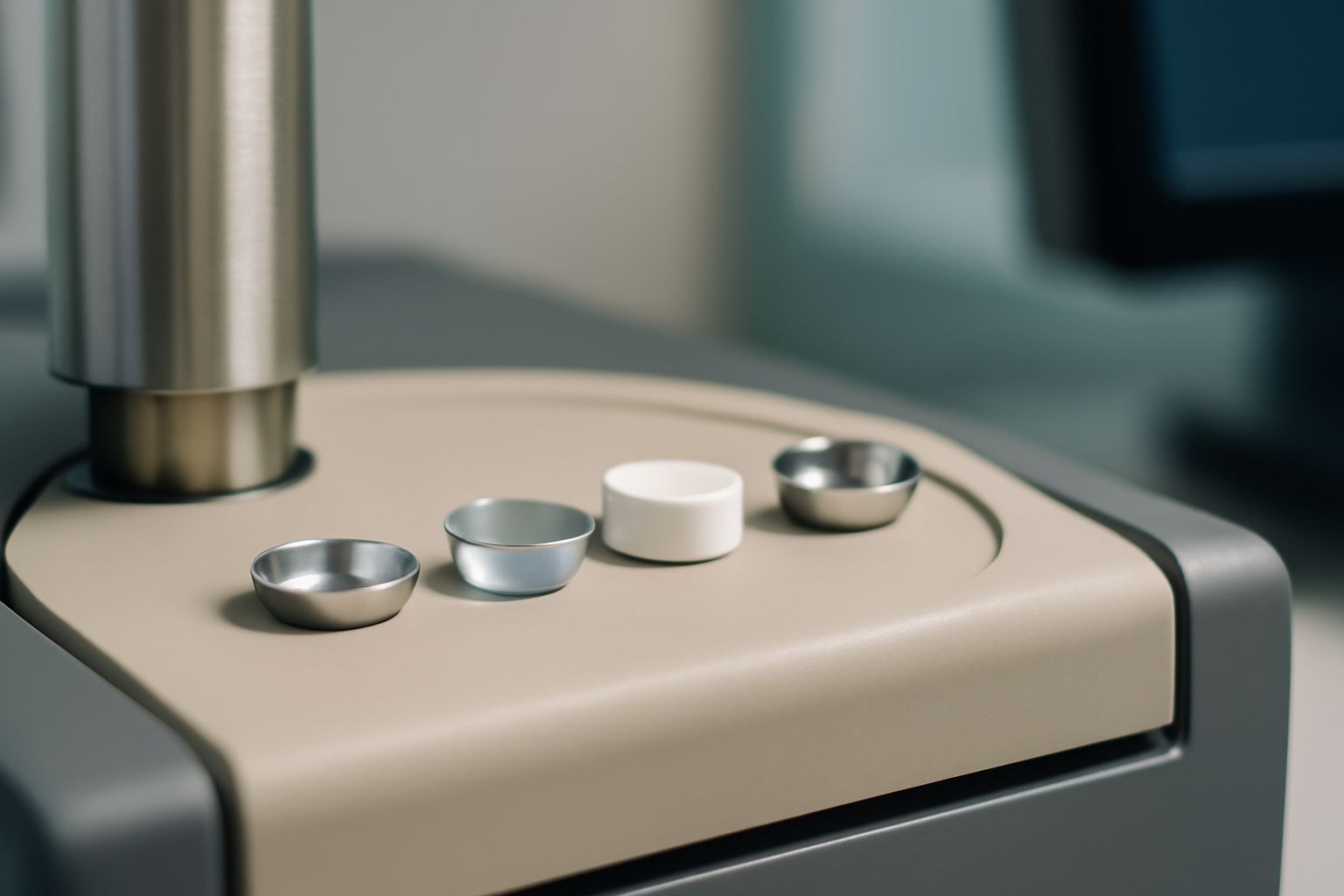Your cart is empty.
shop now
Your cart is empty.
shop now
Test failures and inconsistent results can slow down research and waste budgets. Reliable solutions start with the right crucible in every laboratory test.
The main problems in thermal analysis come from substandard crucibles, which lead to poor heat transfer, sample contamination, and shortened equipment life. Precision thermal analysis crucibles for laboratories solve these issues by supporting accurate and trustworthy results.

I have seen many labs struggle with data accuracy and repeatability until they switched to well-made crucibles. Small changes in sample setup and vessel quality have improved error rates, reduced repeat experiments, and lowered maintenance costs across different test methods.
Low-quality crucibles are often the hidden reason behind failed experiments and unreliable measurements in lab work. Bad fit or impurities in the pan make every step harder.
Substandard crucibles can cause heat loss, baseline drift, cross-contamination, or even damage to sensitive thermal analysis instruments. These flaws raise risk and lower result confidence.
| Issue | Source | Impact on Measurements |
|---|---|---|
| Uneven Heat Distribution | Irregular construction or poor material | Distorted DSC/TGA results |
| Baseline Drift | Uses of mixed or untested alloys | False signal in data readout |
| Sample Contamination | Lack of purity, residue from old batch | Alters chemical reactions, skewing results |
| Instrument Damage | Poorly sized or sharp edges | Scratches or overheating, higher repair costs |
Labs confirm in feedback that switching to trusted, certified crucibles lowers return rates and increases trust in their DSC and TGA outputs. Resources like thermal analysis and laboratory equipment publications support the need to avoid bargain alternatives when accuracy matters.
Small inconsistencies in data often come from the pan below the sample. Precision crucibles close the source of error by holding heat and shape exactly as needed.
Well-made crucibles allow even temperature distribution, low signal noise, and minimal artifact formation. These features keep each test repeatable and the conclusions solid.
| Key Feature | Effect on Measurement | Lab Benefit |
|---|---|---|
| Tight Tolerance Manufacturing | Predictable fit and heat transfer | Accurate baseline, repeatable runs |
| High Material Purity | No spurious reactions with samples | Cleaner signals, low false positives |
| Consistent Surface Finish | Reduces random errors and signal drift | Reliable output in every analysis |
| Quality Control Documentation | Traceable and proven specs | Trusted data, easier to publish or audit |
I work with many labs that now require a certificate of analysis or similar proof for new batches of pans and crucibles. According to calorimetry best practices, this extra documentation supports reproducibility standards in research and production labs alike.
Experiments can quickly fail if samples get exposed to outside substances. The right crucible, with proper purity and surface, is the best way to lock out contamination.
Precision crucibles have smooth, inert surfaces that prevent material leaching, adsorption, or residue build-up. This keeps sample chemistry stable from loading to data processing.
| Preventive Property | Working Mechanism | Contamination Risk |
|---|---|---|
| Ultra Smooth Surface | Makes it harder for residue to stick | Much less carryover between tests |
| High Chemical Inertness | Stops reaction with loaded samples | No unwanted data spikes |
| Controlled Manufacturing | Avoids hidden traces from processing | Protects critical work from lab-to-lab variability |
My advice for all teams: always confirm chemical compatibility using chemical resistance charts. Using poor crucibles has caused failed batches and even equipment contamination, requiring full cleaning or replacement. Certified pans remove this risk almost entirely in most daily workflows.
Test instruments are expensive and downtime is costly. Perfectly matched crucibles help protect your most important laboratory investments for many test cycles.
Quality crucibles fit tightly, avoid hotspots, and stop abrasive wear. This lowers the risk of breakdown, cleaning interruptions, and parts replacement.
| Crucible Feature | Long-Term Equipment Effect | Best Lab Practice |
|---|---|---|
| Optimized Size and Fit | Reduces wear on sample holders | Choose factory-specified pans |
| Material Selection | Less corrosion or stress cracks | Check manual, follow OEM advice |
| Heat Resistance | Protects sensors and hardware over many runs | Never exceed rated maximums |
| Easy Cleaning/Disposal | Lowers residue and dust inside machines | Clean after every use or choose disposables |
As I see in many labs, longer equipment life is achievable simply by using correct pans with every analysis. Instrument lifecycle management research confirms that optimized consumable selection lowers overall costs and keeps test throughput high all year long.